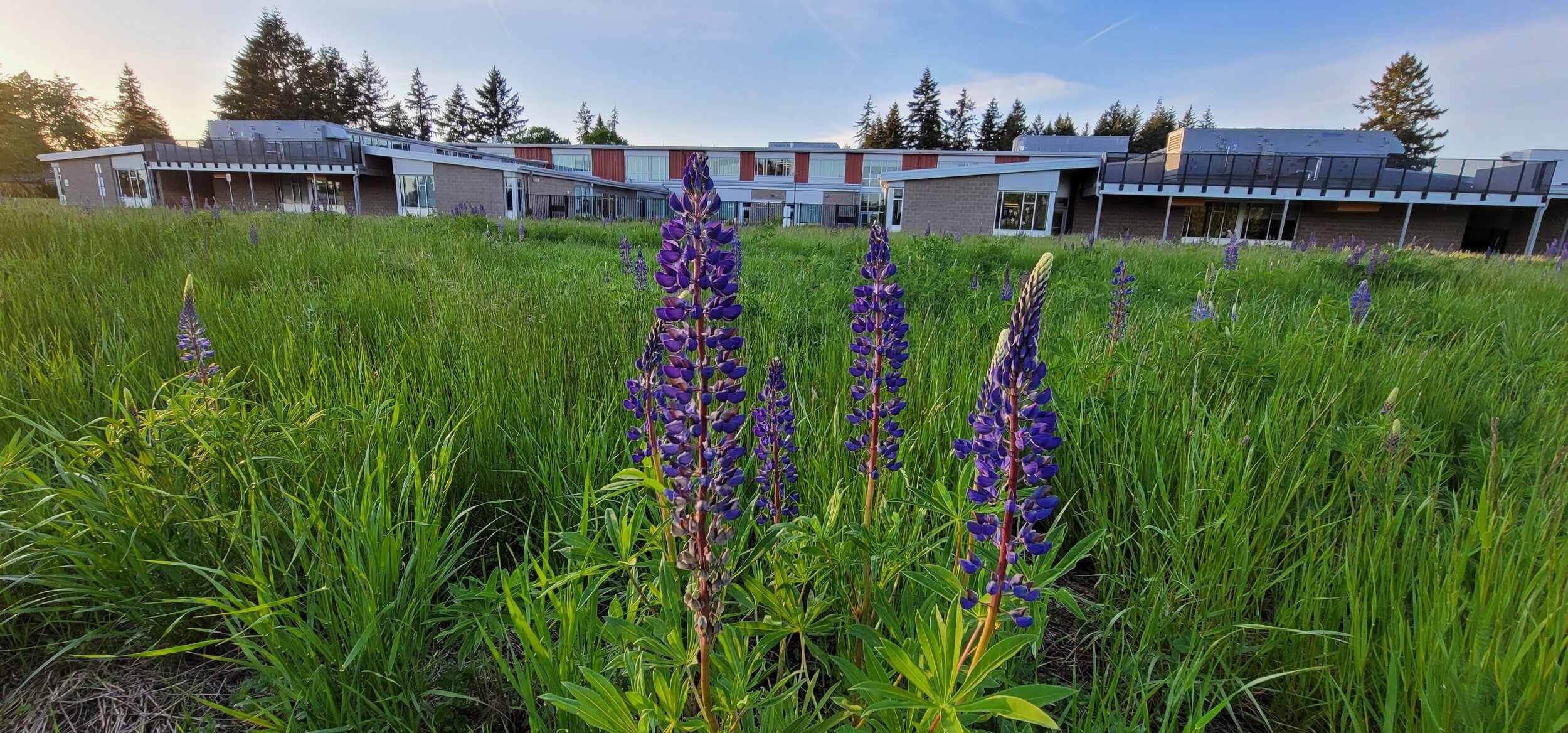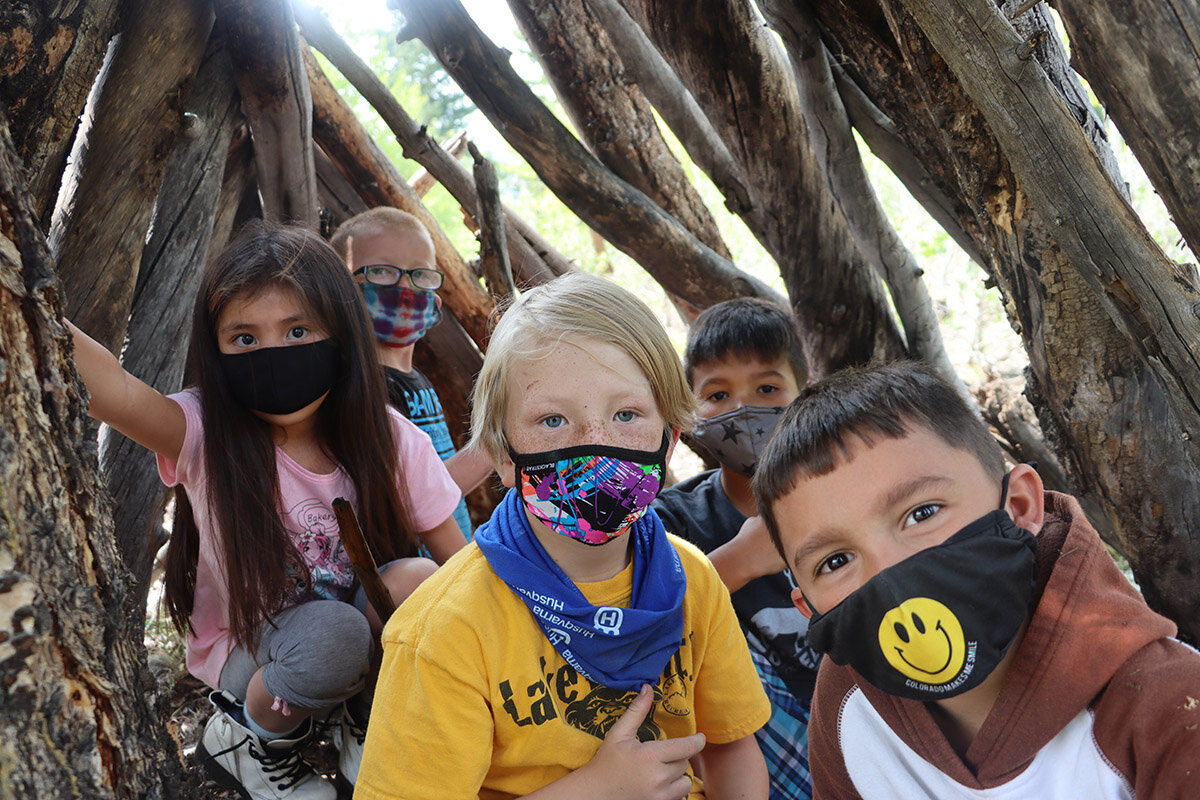Full In-person Instructional Plans
The many health and learning benefits of being outdoors make it a desirable feature of an in-person instructional plan. But what does it look like, and what capacities would a district need to support it? This approach illustrates how educational leaders can build district capacity to integrate equitable, high-quality, outdoor learning experiences into their in-person instructional plans.
Using the outdoors positions schools to achieve the goals described in Chapter 11: “Instructional Strategy for 3D Learning: Outdoor Learning Experiences” of the California Science Framework; Appendix G: “California Education and the Environment Initiative” of the History Social-Science Framework; Chapter 2: "Supporting Health Education of the Health Education Framework”; and Chapter 8: "Transcending Disciplinary Boundaries — Arts Integration" of the SBE-Adopted Arts Framework. These documents suggest schools permanently utilize outdoor learning as one of the central strategies for teaching, a message also codified in our state’s Blueprint for Environmental Literacy.
Recommendations for outdoor in-person learning
A school or district’s capacity to engage students in equitable, high-quality outdoor learning (small cohort, hybrid, or 100 percent in person) is fortified through prioritizing science, utilizing outdoor spaces, considering staffing, prioritizing communication, investing in professional learning, and designing for students at the margins.
Prioritize science. Allocate equal amounts of time to science as for other core academic subjects in the elementary grades. Being outdoors lends itself to science, so take advantage of that opportunity.
Utilize outdoor spaces. Incorporate multiple opportunities for every student to learn outdoors, including bringing instruction of “core” subjects outside.
Consider staffing. Utilize classified staff, paraprofessionals, non-certificated staff, expanded learning providers, or contracted outdoor educators to provide outdoor instruction.
Design at the margins. Center instructional plans on the particular needs of the most vulnerable students in the system. If you design for the most vulnerable, your plans will work for all students.
Prioritize communication. Establish regular, consistent channels of communication and feedback among classroom teachers, school leaders, resource specialists, and students/families. Teaching students indoors and outdoors, on campus and off campus, can make schedules more complex. Redundant communication through a variety of media will keep things running smoothly even when there are changes to routines.
Invest in professional learning. Invest in ongoing professional learning for school leaders, teachers, and staff. Consider more flexible uses of district and school professional learning and collaboration time; for example, teachers engaging in shorter, more frequent collaboration with each other on outdoor teaching and learning practices and experiences, or synchronous/asynchronous professional learning led by outdoor education organizations.
Outdoor in-person learning
A fully realized district instructional vision for in-person outdoor learning will include a comprehensive TK–12th grade plan for “using the outdoors for learning” and “learning about the outdoors.” Districts and schools can equitably augment existing classroom curriculum with experiences in schoolyards, neighborhoods, nearby nurseries, community gardens, vegetable markets, local parks, daylong field trip sites, and overnight experiences, encouraging students to connect with their local and wilderness environments through science practices and interdisciplinary studies. There are many resources available to support taking instructional time outside, and many community-based organizations that can assist districts in making and carrying out these plans. Consider the following elements in developing a districtwide outdoor learning plan.
Enhance your adopted curriculum. Several of California’s adopted science curriculum programs have developed guides for embedding outdoor learning in their modules and units. These curriculum connection documents can be used by teachers, science specialists, and curriculum coordinators.
Take advantage of your schoolyard. Teachers can move classes outside daily without leaving campus to take advantage of outdoor classrooms, the school garden, a grassy playground, or just sitting under a tree. Many classroom activities that are typically done indoors can be simply moved outdoors under a canopy, sitting on stumps or on the grass. In addition, exploring, investigating, and monitoring the outdoors on schoolyards can greatly enhance science and environmental learning and embed science as a core subject in the curriculum.
Create a routine for regular walking field trips. Many schools are within walking distance of local parks, nurseries, vacant lots, farmers markets, and other outdoor learning sites. Weekly walking field trips are an accessible, inexpensive (often underutilized) opportunity to help students to observe and monitor the seasons, build their connection to nature in their community, understand environmental justice issues, and add place-based relevance to the school curriculum. The rest of this resource provides additional guidance for an approach to walking field trips.
Don’t forget about longer field trips! Daylong field trips to regional, state, and national parks and to aquariums, museums, zoos, and botanical gardens can provide important learning experiences that cannot be replicated in the classroom. These field trips can be signature experiences to punctuate or enhance units of study in science, history/social studies and other subjects. Community-based organizations that have deep roots in the local area are often eager to become partners in developing custom field trip experiences that are directly tied to specific classroom learning goals.
Use the outdoors for project-based learning and community science (previously referred to as “citizen science”) projects. Outdoor investigations can provide an engaging context for longer term, interdisciplinary projects that allow students the opportunity to apply knowledge and practices from many subjects to solving a local problem in their community. Monitoring local bird populations over time; testing water, air, and soil for toxins; mapping tree canopies in the neighborhood; or participating in habitat restoration can be powerful ways to build self-efficacy among students. These types of projects can be part of the regular school day or take place in afterschool and summer programs.
Outdoor school for all! A week at a residential outdoor science school is, for many students, the most powerful and memorable learning experience they have during their K–12 career. Outdoor school is often the signature, peak experience that TK–12 outdoor learning plans build toward and from. Many school districts in California have decided to ensure that every student attends one of these programs sometime between 4th and 8th grade. Oregon and Washington both have active, statewide “outdoor school for all” initiatives. These immersive experiences give every student direct access to some of the most beautiful and inspiring natural areas of the state, stimulate relationship building and social/emotional development, help students to connect with educators and other adults in new ways, and often increase the number of hours that students spend learning science by 25 to 50 percent over the course of an entire year. California has a rich network of residential outdoor science schools that are operated by county offices of education and nonprofit organizations.
The following approach to walking field trips is just one important part of a full in-person instructional plan for outdoor learning. An Approach to Walking Field Trips shows how these frequent, routine experiences can address each of the key recommendations for outdoor in-person learning.
About An Approach to Walking Field Trips
An Approach to Walking Field Trips offers guidance on mapping out walking field trip destinations and a progression of routines that have complete write-ups.
The starter and general routines build foundational skills for all students, K–5. Grade-band routines emphasize specific practices for each grade band (K–1, 2–3, and 4–5) that build in sophistication and complexity across the grade levels. Our approach to Walking Field Trips is currently written for K–5 instruction but may be adapted for grades K–12, and the starting routines and general routines are applicable to both elementary and secondary grade levels.
How the Approach meets the recommendations for outdoor learning
Prioritize science. The Approach to Walking Field Trips uses science as a context through which students learn English language arts and math practices. Activities and routines build students’ capacity to use observations to identify patterns, collect and analyze data, and make evidence-based arguments. Science is elevated through the interdisciplinary convergence of science, literacy, and math.
Utilize outdoor spaces. The Approach to Walking Field Trips incorporates multiple opportunities for every K–5 student in the district to learn core subjects in a local outdoor setting. It presents activities and routines across grade levels that can be led on the school grounds or at local, natural points of interest that are within walking distance of a school site. Teaching students about their environment grounds them in deeper appreciation and understanding of where they live and helps motivate them toward a healthy relationship with the natural world. The maps that are created become a school resource, filled with information from the teachers. The outdoor equipment needs are low (hand lenses, journals, pencils, stopwatches, measuring tapes or rulers).
Consider staffing. The Approach to Walking Field Trips supports classroom teachers to take learning outdoors without relying on additional staffing — although leading a class of students on a walking field trip off the school site and into a local neighborhood might be better with chaperones. Including family members as chaperones serves to expand the learning beyond the classroom and into the home. Utilizing classified staff, paraprofessionals, non-certificated staff, expanded learning providers, or contracted outdoor educators to support or lead the Walking Field Trip activities offers opportunities to bring local knowledge, real careers, and applications of science to light for students.
Design at the margins. Access to field trips and outdoor learning has often been inequitable across districts and schools, often relying on PTA funding or the decisions and motivations of individual teachers. The Walking Field Trip model makes using the outdoors accessible to every student on a regular basis. When planning to implement the Approach to Walking Field Trips, district and school administrators should first ensure their plan works for marginalized student groups, including students of color, students who receive free and reduced meals, students with special needs, and/or emerging multilingual students. This process includes encouraging and supporting teachers to implement walking field trips and to understand the benefits of this experience for students.
Prioritize communication. Strong communication can reinforce the educational purpose of learning outdoors and the role of the Walking Field Trips for all stakeholders and establish commitment to taking students on walking field trips. The Approach to Walking Field Trips is supported by regular channels of communication among classroom teachers, school leaders and school board members, and students/families, as well as potentially local park administrators or other local businesses (e.g., a local botanic garden). Communication can ensure that teachers provide helpful cross-disciplinary information about outdoor learning sites to each other; allow school leaders to reduce demands on teachers for district field trip permission paperwork; and invite families to participate more in regular, accessible field trips. In addition, there should be communication around how the Approach to Walking Field Trips supports a district vision for learning and environmental literacy.
Invest in professional learning. The Approach to Walking Field Trips can be complemented with in-person and online professional learning. Teachers can walk together to the various destinations and practice leading the routines with each other before they go with students. There are a number of professional learning programs and resources that teachers can use as synchronous or asynchronous learning opportunities, such as the BEETLES’ Professional learning video series, or Nature Journaling Activity videos from John Muir Laws and Emilie Lygren. For considerations and management strategies for outdoor excursions, we also suggest reading Taking FOSS Outdoors and Managing the Outdoor Classroom.
National COVID-19 Outdoor Learning Initiative
The National COVID-19 Outdoor Learning Initiative supports schools and districts around the country in their efforts to reopen safely and equitably using outdoor spaces as strategic, cost-effective solutions to increase physical distancing capacity onsite and provide access to abundant fresh air. The Initiative seeks to equitably improve learning, mental and physical health, and happiness for children and adults using an affordable, time-tested outdoor approach to keeping schools open during a pandemic.





















